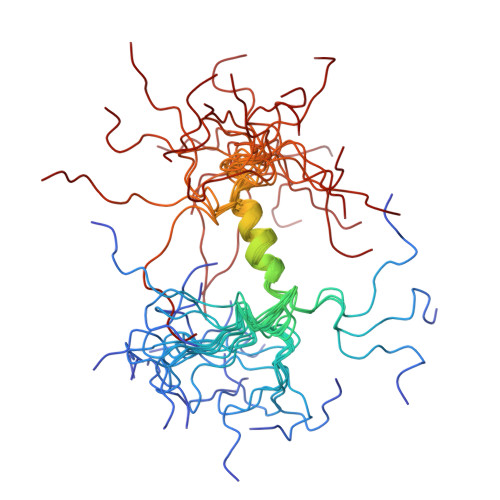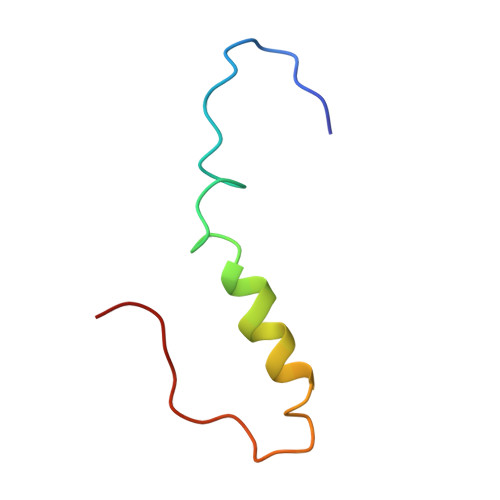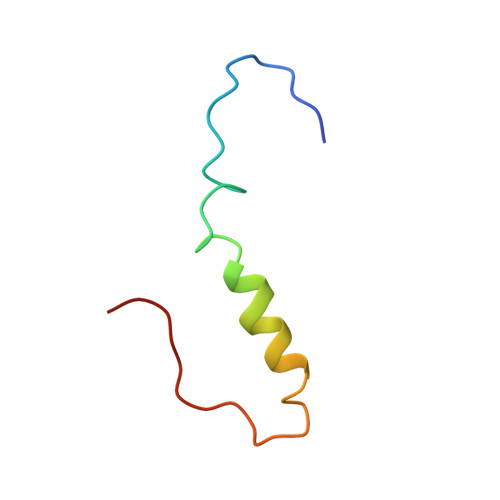NMR structure of the "ball-and-chain" domain of KCNMB2, the beta 2-subunit of large conductance Ca2+- and voltage-activated potassium channels.
Bentrop, D., Beyermann, M., Wissmann, R., Fakler, B.(2001) J Biological Chem 276: 42116-42121
- PubMed: 11517232
- DOI: https://doi.org/10.1074/jbc.M107118200
- Primary Citation of Related Structures:
1JO6 - PubMed Abstract:
The auxiliary beta-subunit KCNMB2 (beta(2)) endows the non-inactivating large conductance Ca(2+)- and voltage-dependent potassium (BK) channel with fast inactivation. This process is mediated by the N terminus of KCNMB2 and closely resembles the "ball-and-chain"-type inactivation observed in voltage-gated potassium channels. Here we investigated the solution structure and function of the KCNMB2 N terminus (amino acids 1-45, BKbeta(2)N) using NMR spectroscopy and patch clamp recordings. BKbeta(2)N completely inactivated BK channels when applied to the cytoplasmic side; its interaction with the BK alpha-subunit is characterized by a particularly slow dissociation rate and an affinity in the upper nanomolar range. The BKbeta(2)N structure comprises two domains connected by a flexible linker: the pore-blocking "ball domain" (formed by residues 1-17) and the "chain domain" (between residues 20-45) linking it to the membrane segment of KCNMB2. The ball domain is made up of a flexible N terminus anchored at a well ordered loop-helix motif. The chain domain consists of a 4-turn helix with an unfolded linker at its C terminus. These structural properties explain the functional characteristics of BKbeta(2)N-mediated inactivation.
Organizational Affiliation:
Department of Physiology II, University of Tübingen, Ob dem Himmelreich 7, 72074 Tübingen, Germany. detlef.bentrop@uni-tuebingen.de


















